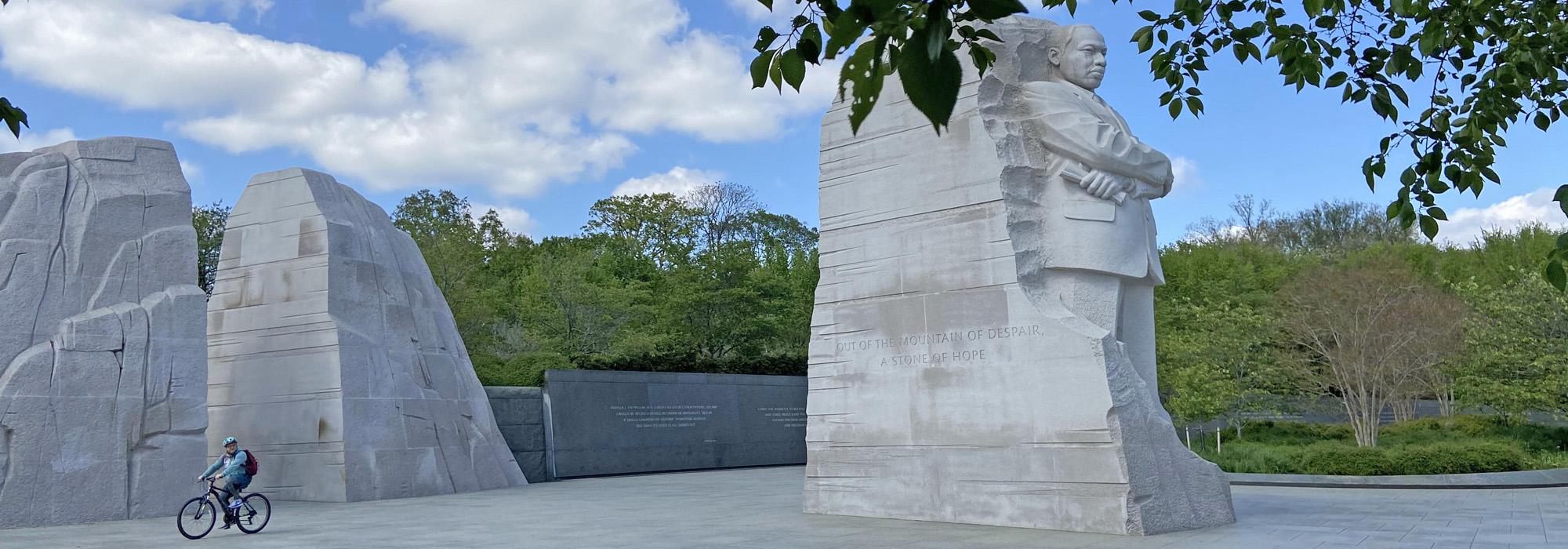New Digital Guide to African American Cultural Landscapes from The Cultural Landscape Foundation
Media Contact: Nord Wennerstrom | T: 202.483.0553 | M: 202.255.7076 | E: nord@tclf.org
Ever growing guide launches with more than 140 sites, nearly 30 biographies, and nine themes
Washington, D.C. (February 7, 2024) – The Cultural Landscape Foundation, a national, Washington, D.C.-based education and advocacy non-profit, today launched the What’s Out There Guide to African American Cultural Landscapes, an ever growing digital guide that at launch features more than 140 sites associated with African American cultural lifeways. The guide, debuted for Black History Month, also includes nine organizational themes, such as “Impacts of African Cultures on the American Landscape” and “Commemoration and Healing,” and nearly 30 biographies of those that have shaped these sites including landscape architects, architects, gardeners, and horticulturists. The Guide to African American Cultural Landscapes is part of TCLF’s broader Race and Space initiative launched in 2020. The guide is optimized for iPhones and similar handheld devices, and includes What’s Nearby, a GPS-enabled feature that locates all landscapes within a given distance, customizable by mileage or walking time. To date TCLF has created 22 city and regional guides, and three thematic guides. This is just the beginning; more sites and biographies will be added. TCLF is also asking the public to submit information about places and people not currently represented.
The Guide to African American Cultural Landscapes is nested within two of TCLF four principal programs – What’s Out There® and Pioneers®. The former is an ever-growing digital database of cultural landscapes, most of which are in the United States, featuring concise descriptions of nearly 2,700 sites, accompanied by more than 14,000 images. The latter features a digital database of landscape architects and allied professionals, and other shapers of our cultural landscape legacy, which currently includes more than 1,400 entries.
Each Guide to African American Cultural Landscapes entry includes a concise, 250 to 325-word site description, drop down menus with information about the site’s typology (e.g., public park, etc.), style (e.g., picturesque, etc.), designers, and related landscapes. It also indicates if a site has recognized significance (e.g. National Register of Historic Places, National Historic Landmark). Each entry has a media gallery with four to ten images, and where applicable, a complementary video and/or link to an external website. The drop-down menu under Places includes an Advances Search function that enables users to search geographically by region, state, city, zip code, and up to 100 miles from a specific zip code. Sites featured in the guide include the African Burial Ground National Monument (New York, N.Y.), Black Lives Matter Plaza (Washington, D.C.), Fort Negley Park (Nashville, TN), Hiawatha Golf Club (Minneapolis, MN), Shockoe Hill African Burying Ground (Richmond, VA), and dozens of others.
TCLF organizes cultural landscapes, which are landscapes that have been affected, influenced, or shaped by human involvement, into four generally recognized categories: “Historic Site,” “Vernacular Landscape,” “Designed Landscape,” and “Ethnographic Landscape.” The category “Designed Landscape,” for example, contains more than 70 types and subtypes, and sixteen distinct styles.
However, what became very evident in the development of this guide are: [a] the limitations of existing language to describe and contextualize the types and styles of cultural landscapes associated with African American experiences; and [b] the need to address these gaps and expand this lexicon. The goals of this guide include inspiring further research, investigation, contextualization, registration, and exploration. Given TCLF’s mission to “connect people to places,” our quest to make visible, instill value, and engage the public is foundational to increasing the awareness and informing future stewardship decisions for all cultural landscapes.
Using the existing four cultural landscape categories (noted above), the following nine overarching themes created for this guide – “Enslavement,” “Impacts of “Impacts of African Cultures on the American Landscape,” “The Underground Railroad,” “Reconstruction,” “The Civil Rights Movement,” “Education,” “Public Accommodations,” “Commemoration and Healing,” and “Elevating Designers and Shapers” – can start to put forth a broad, critical framework for organizing these unique and significant cultural resources.
“The fragility and invisibility of these landscapes makes them vulnerable to change or even worse, erasure. Working with academics, kin keepers, local and state non-profits, state, and federal agencies, TCLF aims to amplify the awareness and understanding of these unique places where history happened,” said Charles A. Birnbaum, TCLF’s President and CEO. “TCLF also hopes that by including them in this digital guide we can begin to build a better contextual understanding of this distinct cultural landscape legacy that will lead to their protection, documentation, commemoration, designation, and public engagement so that they can endure and thrive for future generations.”
The What’s Out There Guide to African American Cultural Landscapes was made possible by a grant from the National Endowment for the Arts.
About The Cultural Landscape Foundation
The Cultural Landscape Foundation (TCLF), is a 501(c)(3) non-profit founded in 1998 to connect people to places. TCLF educates and engages the public to make our shared landscape heritage more visible, identify its value, and empower its stewards. Through its website, publishing, lectures, and other events, TCLF broadens support and understanding for cultural landscapes. TCLF is also home to the Cornelia Hahn Oberlander International Landscape Architecture Prize.
EDITORS: CLICK HERE FOR HI-RES IMAGES.
# # #



